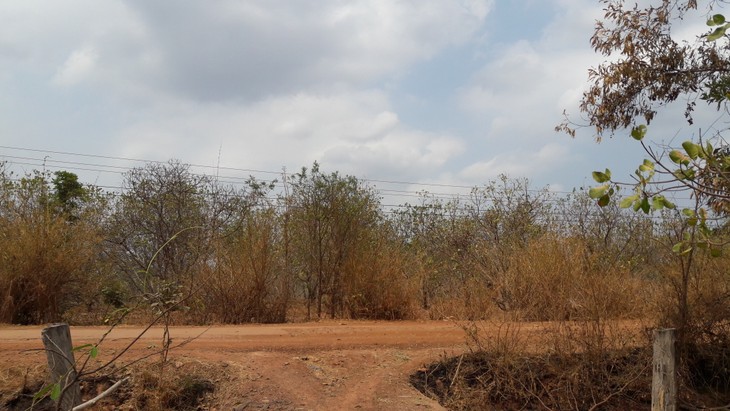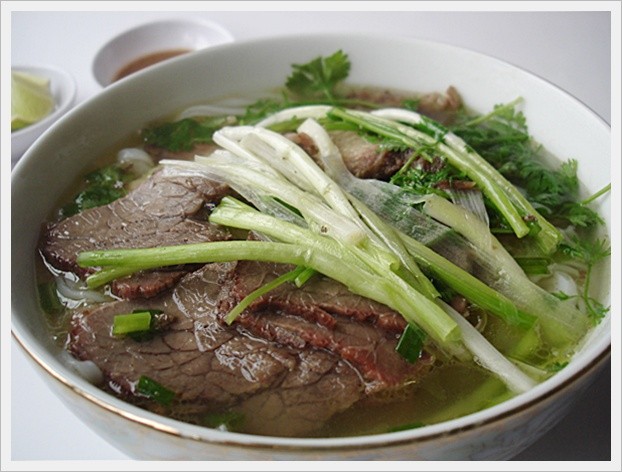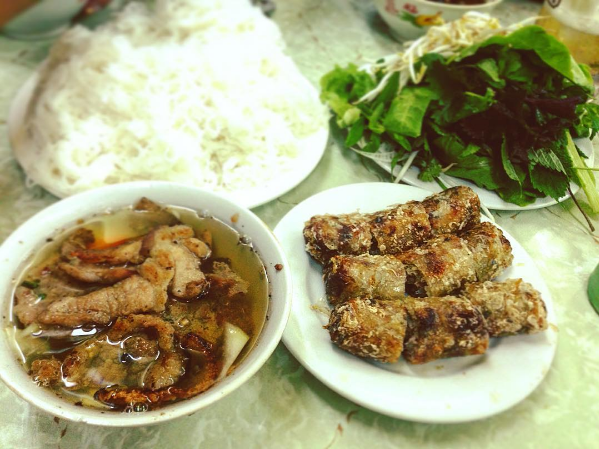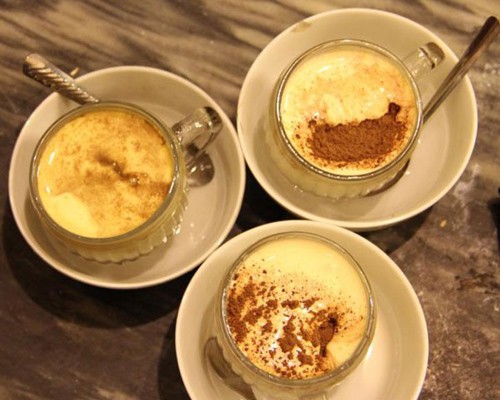Hello and welcome to VOV’s Letter Box, a weekly feature dedicated to our listeners around the world. We are Kim Chi and Nhat Quynh.
A: First on our show today we’d like to thank Roger Roussel for the many letters and stickers you sent us last week. Listened to our programs on January 13th, 14th, and 16th from 0100 to 0127 UCT on the frequency of 7315 and rated SINPO all 5s.
B: He wrote: “Dear radio friends, I am always happy to listen to your very interesting and well presented radio broadcasts. For me it is with great pleasure that I listen to your radio station. Keep up the great job. Receive from Canada my best regards. Happy New Year!”
A: Thank you very much, Mr. Roussel, for your detailed reports and for tuning in to our broadcasts. We’ll send you QSL cards to confirm your reports.
B: Another listener from Canada, Robert Gauvin, reported good reception via WRHI in the US. He wrote: “I write to you from the Canadian capital of Ottawa. It has been quite a mild winter in Ottawa so far this year. Temperatures have barely gone below zero Celsius most of January - a month in which temperatures should be around -15 degrees in the day time. I’m sure it must be much warmer in Vietnam. Is climate change also affecting weather patterns in Vietnam? How does climate change happen in Vietnam – more intense storms? More rain?”.

Climate change causes prolonged drought in Dak Lak province |
A: Climate change is a global phenomenon. It’s affecting weather patterns around the world. Vietnam is among the countries most vulnerable to climate change, which has caused increasingly severe typhoons, floods, and drought, devastating human lives and property.
B: Climate change has had numerous effects but its most serious effects have been on agriculture, forestry, and fish breeding.
A: By the end of the 21st century, if the sea level rises 1m, Kien Giang province will lose 81%, and Hau Giang province will lose 77%, of its land area.
B: Half the area of Thai Binh, Nam Dinh, Soc Trang, Bac Lieu, and Ca Mau province will also be submerged. 17% of the Red River Delta region will be submerged and 40% of the Mekong Delta, which is already prone to flooding.
A: In recent years, Vietnam has boosted its cooperation with the UN initiative to coordinate agricultural production with the national climate response program. The 3-year program will sort out inappropriate development policies and look for more effective measures.
B: Vietnam is working timelessly to mitigate the impacts of climate change and reduce greenhouse gas emissions. Vietnam is committed to supporting international efforts to respond to climate change, including the Intended Nationally Determined Contributions (INDC) plan.
A: On April 22 Vietnam and more than 100 other countries attended the signing ceremony of the Paris Agreement on Climate Change in New York 4 months after it was approved in Paris. Climate change adaptation is currently one of Vietnam’s top priorities.
B: We hope we have answered Mr. Gauvin’s questions and similar questions from Mr. Fumito Hokamura of Japan.
A: Here’s an email from Muhammad Shamim of India who listened to our broadcast on February 22 on the frequency of 7280 from 1600 to 1630 UTC. He commented that the Letter Box is educational and useful and asked about traditional food and drink of Vietnam.

Pho bo- Vietnamese beef noodle |
B: In Vietnam, we don’t identify one particular food as our traditional food because food varies by region throughout the country. But here’s CNN’s list dishes every visitor should try when visiting Vietnam.
A: According to "Parts Unknown" host Anthony Bourdain, the cheapest and perhaps most delicious place to find Vietnamese cuisine is in a traditional open-air market. Anthony Bourdain introduced foods that will give you a perfect introduction to Vietnam's best street food.
B: Pho, Vietnam’s noodle soup tops the list. This simple staple consisting of a salty broth, fresh rice noodles, and a sprinkling of herbs and either chicken or beef, features prominently in the local diet. It's cheap, tasty, and widely available at all hours.

Bun cha -Vietnamese noodle with grilled pork |
A: Pho might be Vietnam's most famous dish, but bun cha or noodle with grilled pork, is the top choice when it comes to lunchtime in Hanoi. Bun cha is served with seasoned ground pork and slices of marinated pork belly cooked over a charcoal fire. Once they're charred and crispy, the morsels are served with a bowl of a fish sauce-heavy broth, a basket of herbs and a helping of rice noodles. Bun cha sets often include some delicious nem cua be -- fried crab spring rolls. It's what President Obama ate on his evening out with Mr. Bourdain.
B: The savory sticky rice called Xoi is less an accompaniment to meals in Vietnam than a meal in itself. Xoi comes with any number of mix-ins (from slivers of chicken or pork to fried eggs), but almost always has a sprinkling of dried shallots on top.
A: Banh xeo, is a crispy crepe bulging with pork, shrimp and bean sprouts, with the garnish of fresh herbs that is characteristic of most authentic Vietnamese dishes. To enjoy Banh Xeo, like a local, cut it into manageable slices, roll it up in rice paper or lettuce leaves and dunk it in whatever special sauce the chef has prepared for you.
B: Goi cuon or fresh spring rolls are a wholesome choice when you've been indulging in too much of the fried food in Vietnam. The translucent parcels are first packed with salad greens, a sliver of meat or seafood and a layer of coriander, before being neatly rolled and dunked in Vietnam's favorite condiment -- fish sauce. When they are fried these parcels go by the name nem ran in the north and cha gio in the south.
A: Bun bo nam bo or vermicelli noodles -- widely popular in Hanoi -- comes sans broth, keeping the ingredients from becoming sodden and the various textures intact. Tender slices of beef mingle with crunchy peanuts and bean sprouts and are flavored with fresh herbs, crisp dried shallots, and a splash of fish sauce and fiery chili pepper.
B: One of Vietnam's most popular dishes, cao lau combines elements from various cultures. This pork noodle dish from Hoi An borrows from the various cultures that visited the trading port in its prime. The thicker noodles are similar to Japanese udon, the crispy won-ton crackers and pork are a Chinese touch, while the broth and herbs are clearly Vietnamese.
A: The French may have brought with them the baguette, but Vietnam takes it to a different level. In the north, chefs stick to the basic elements of carbohydrate, fat and protein -- bread, margarine and paté -- but head south and your banh mi may contain a more colorful combination of cheese, cold cuts, pickled vegetables, sausage, fried egg, fresh cilantro and chili sauce.
B: Ho Chi Minh City's favorite street snack, bot chien is popular with both the after-school and the after-midnight crowd. Chunks of rice flour dough are fried in a large wok until crispy, and then an egg is broken into the mix. Once cooked, it's served with slices of papaya, shallots and green onions, before more flavor is added with pickled chili sauce and rice vinegar.

Egg coffee |
A: Ca phe trung or Vietnamese "egg coffee" is technically a drink, but we prefer to put it in the dessert category. The creamy soft, meringue-like egg white foam perched on the dense Vietnamese coffee will have even those who don't normally crave a cup of joe licking their spoons with delight.
B: In Hanoi, follow the tiny alley between the kitschy souvenir shops at 11 Hang Gai into a courtyard and up several flights of increasingly dicey stairs to pair your ca phe trung with an unbeatable view of Hoan Kiem Lake.
A: We have described a short list of foods that you should try when you visit Vietnam. In addition to yummy food, Vietnam has other things to delight tourists. Come explore it yourself.
B: On today show, we’d like to thank Mohamed Elsayed Abd Eltraheim of Egypt, Hemant Kumar and other members of the Piyadarshi Radio Listeners’ Club in India, and Mr. Nadumuddin and the International DX Radio Listeners’ Club of India for sending us greetings on World Radio Day, February 13.
A: We’d send you our QSL cards to confirm your reports. We welcome your feedback at English Section, VOVworld, Voice of Vietnam, 45 Ba Trieu Street, Hanoi, Vietnam. Our email address is englishsection@vov.org.vn. Thank you for listening to VOV on shortwave and following us online. Good bye until next time.